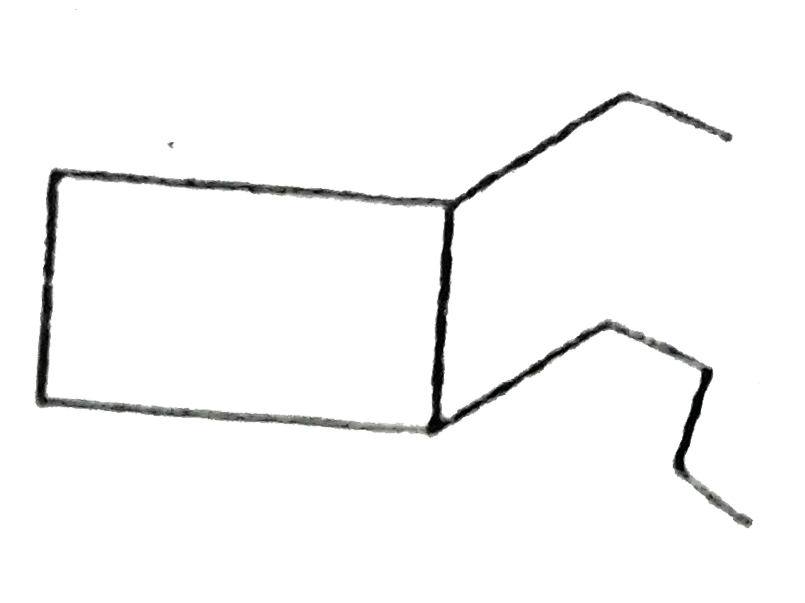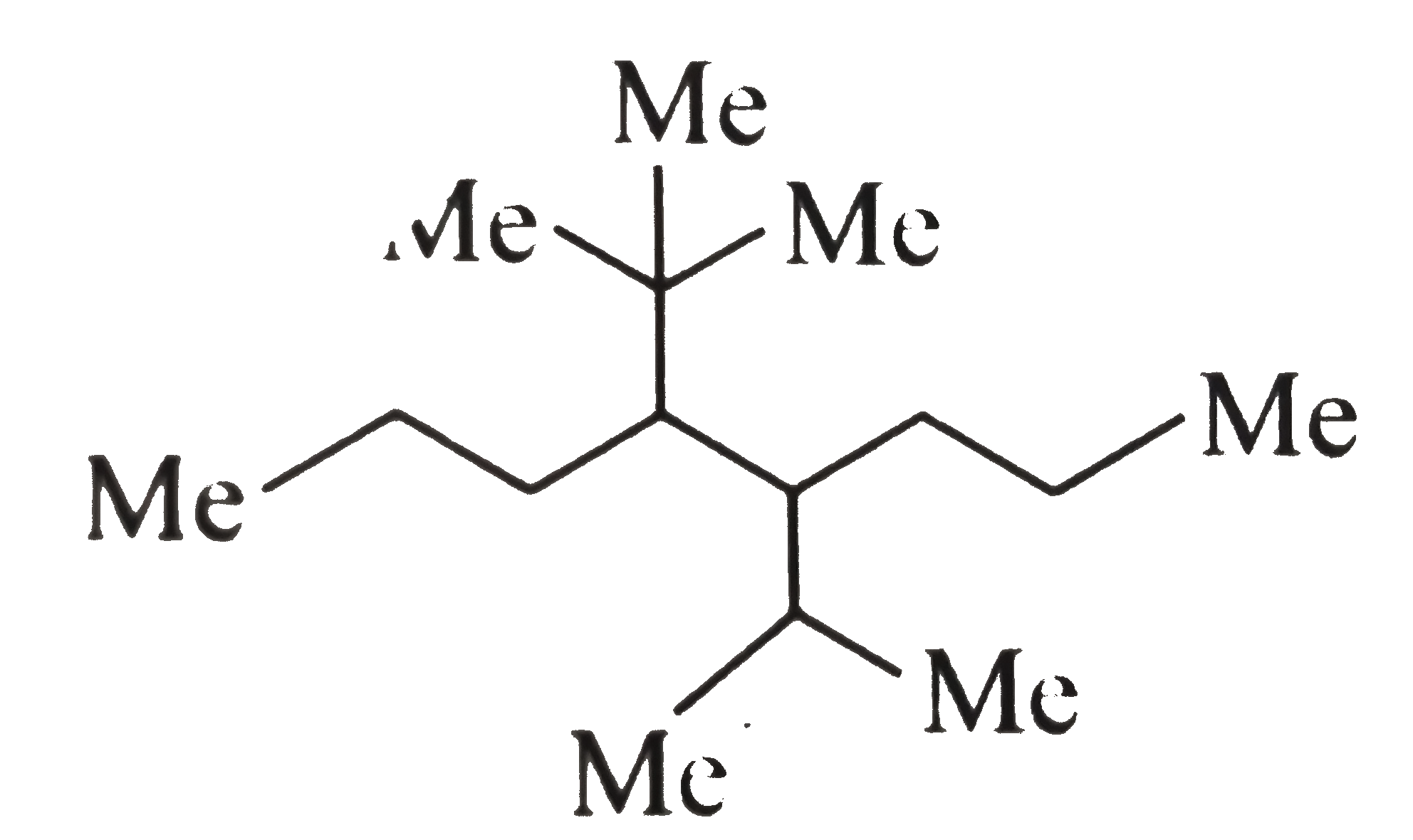Give IUPAC name of K2[Zn(OH)4]
The correct Answer is:a
To derive the IUPAC name of the complex K2(Zn(OH)4), we will follow a systematic approach. Here’s the step-by-step solution:
Step 1: Identify the cation and anion
The given complex is K2(Zn(OH)4).
- The cation is potassium (K).
- The anionic part is (Zn(OH)4).
Hint: Always start by identifying the cation and anion in the complex.
Step 2: Name the cation
Since potassium is a cation, we simply name it as "potassium".
Hint: The cation is named first in the IUPAC naming convention.
Step 3: Identify the ligands in the anion
In the anionic part (Zn(OH)4), the ligand is hydroxide (OH). Since there are four hydroxide ligands, we use the prefix "tetra-" to indicate this.
Hint: Count the number of ligands and use the appropriate prefix.
Step 4: Name the ligands
The hydroxide ion (OH) is a negatively charged ligand, and in IUPAC nomenclature, it is referred to as "hydroxo". Therefore, four hydroxide ligands will be named as "tetrahydroxo".
Hint: Use the correct name for the ligand based on its charge.
Step 5: Name the metal center
The metal in the complex is zinc (Zn). Since the zinc is part of the anionic complex, we will modify its name. The suffix "-ate" is used for metals that are part of anionic complexes. Therefore, zinc becomes "zincate".
Hint: Use the suffix "-ate" for the metal when it is part of an anionic complex.
Step 6: Determine the oxidation state of the metal
The oxidation state of zinc in this complex can be determined from the overall charge of the complex. Since the complex is neutral and there are four hydroxide ions (each with a charge of -1), the total negative charge contributed by the hydroxides is -4. Thus, the oxidation state of zinc must be +2 to balance the -4 charge from the hydroxides.
Hint: Calculate the oxidation state based on the charges of the ligands and the overall charge of the complex.
Step 7: Combine all parts to form the IUPAC name
Putting all the parts together, we have:
- Cation: potassium
- Ligands: tetrahydroxo
- Metal with oxidation state: zincate(II)
Thus, the complete IUPAC name of the complex K2(Zn(OH)4) is potassium tetrahydroxozincate(II).
Final Answer: Potassium tetrahydroxozincate(II)
The given complex is K2(Zn(OH)4).
- The cation is potassium (K).
- The anionic part is (Zn(OH)4).
Since potassium is a cation, we simply name it as "potassium".
In the anionic part (Zn(OH)4), the ligand is hydroxide (OH). Since there are four hydroxide ligands, we use the prefix "tetra-" to indicate this.
The hydroxide ion (OH) is a negatively charged ligand, and in IUPAC nomenclature, it is referred to as "hydroxo". Therefore, four hydroxide ligands will be named as "tetrahydroxo".
The metal in the complex is zinc (Zn). Since the zinc is part of the anionic complex, we will modify its name. The suffix "-ate" is used for metals that are part of anionic complexes. Therefore, zinc becomes "zincate".
The oxidation state of zinc in this complex can be determined from the overall charge of the complex. Since the complex is neutral and there are four hydroxide ions (each with a charge of -1), the total negative charge contributed by the hydroxides is -4. Thus, the oxidation state of zinc must be +2 to balance the -4 charge from the hydroxides.
Putting all the parts together, we have:
- Cation: potassium
- Ligands: tetrahydroxo
- Metal with oxidation state: zincate(II)
Topper's Solved these Questions
- QUALITATIVE INORGANIC SALT ANALYSISBook:CENGAGE CHEMISTRY ENGLISHChapter:QUALITATIVE INORGANIC SALT ANALYSISExercise:Exercises (Multiple Correct) Part-A (Analysis Of Anions)
Explore 30 Videos
- QUALITATIVE INORGANIC SALT ANALYSISBook:CENGAGE CHEMISTRY ENGLISHChapter:QUALITATIVE INORGANIC SALT ANALYSISExercise:Exercises (Multiple Correct) Part-B (Analysis Of Cations)
Explore 28 Videos
- QUALITATIVE INORGANIC SALT ANALYSISBook:CENGAGE CHEMISTRY ENGLISHChapter:QUALITATIVE INORGANIC SALT ANALYSISExercise:Solved Example
Explore 11 Videos
- P-BLOCK GROUP 18 ELEMENTS - THE INERT GASESBook:CENGAGE CHEMISTRY ENGLISHChapter:P-BLOCK GROUP 18 ELEMENTS - THE INERT GASESExercise:Ex 5.1 (Objective)
Explore 14 Videos
- REDUCTION AND OXIDATION REACTION OF ORGANIC COMPOUNDSBook:CENGAGE CHEMISTRY ENGLISHChapter:REDUCTION AND OXIDATION REACTION OF ORGANIC COMPOUNDSExercise:SUBJECTIVE TYPE
Explore 4 Videos
Similar Questions
Give its IUPAC name

View SolutionGive the IUPAC name of :

View SolutionIUPAC name of K[BF4]
View SolutionGive IUPAC name of I−CH2−CHO
View SolutionIUPAC Name of K2[PdCl4]
View SolutionGive IUPAC name of [CrCl2(H2O)4]Cl
View SolutionGive IUPAC name of : CH2=CH−CHO
View SolutionGive IUPAC name of : Br−CH2−CHO
View SolutionGive IUPAC name of : OH−CH2−CH2−CHO.
View SolutionGive IUPAC name of the [Cu(NH3)4]SO4
View Solution